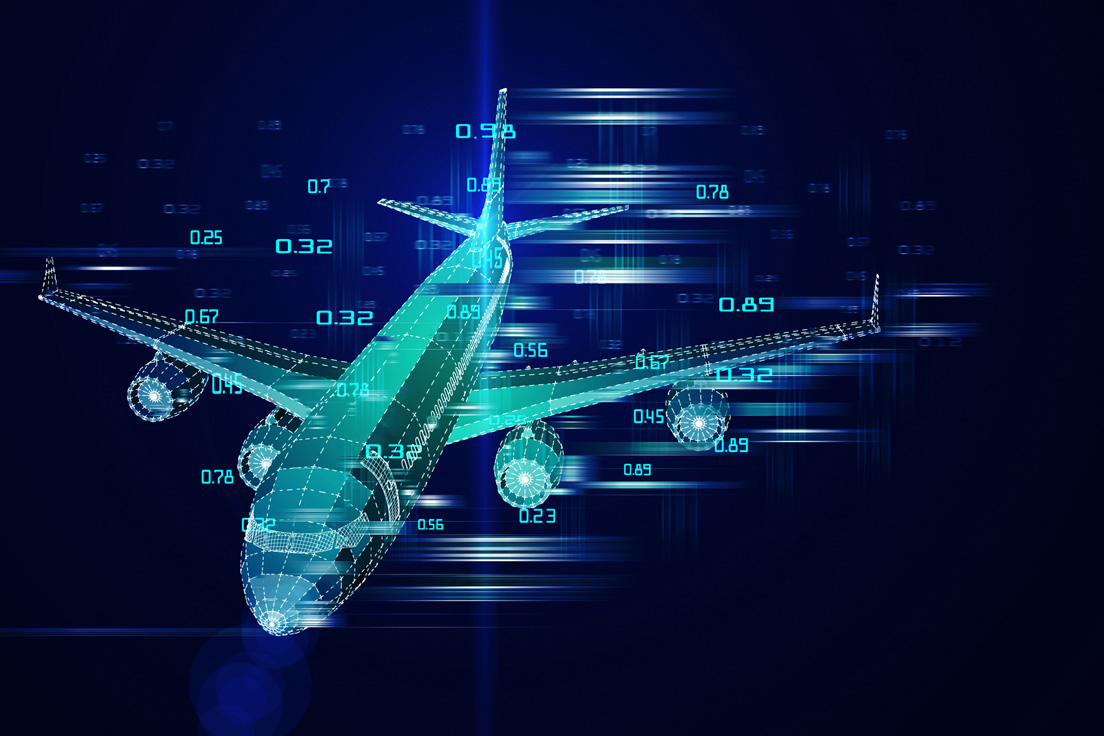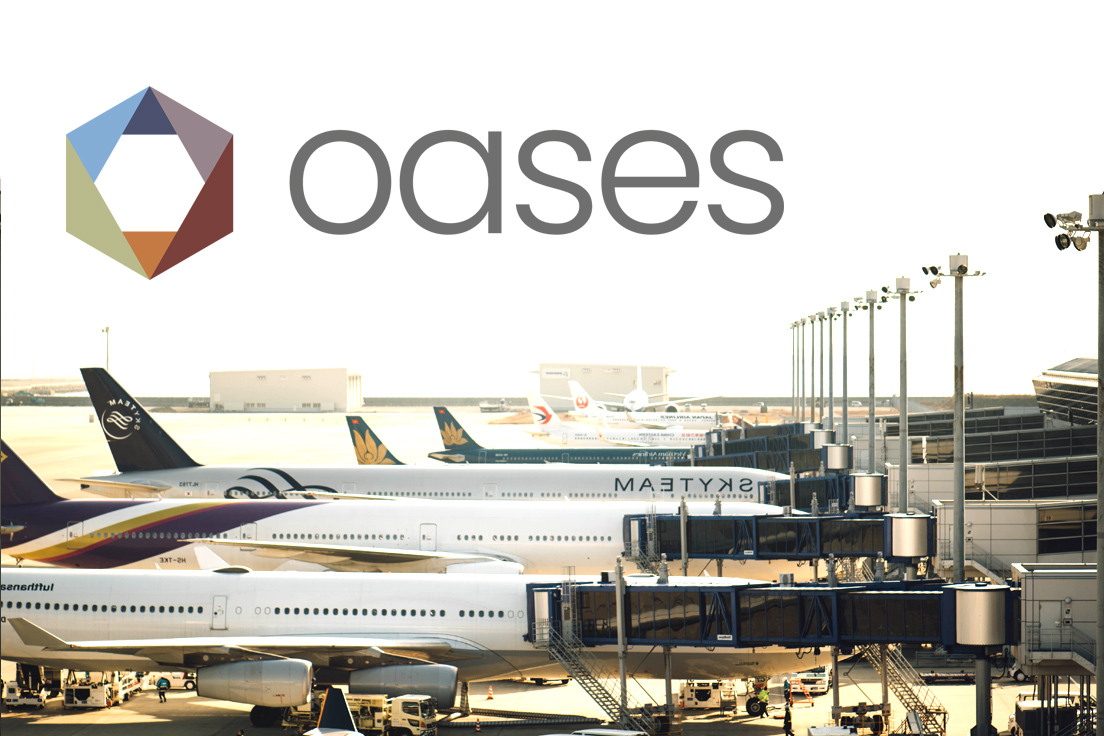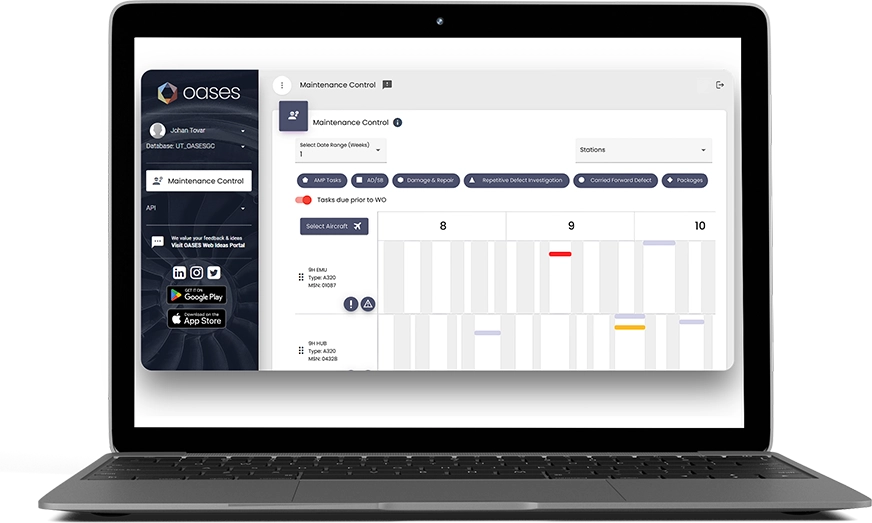As digital technologies become increasingly integrated into the aviation industry, modern aircraft sensors now generate vast amounts of data. This data is used for a variety of purposes, such as monitoring performance, predicting maintenance needs, and ultimately, improving safety. While this has revolutionised MRO operations, it has broadened the attack surface, bringing new security concerns to the forefront.
This article will explore some of the latest security concerns related to aircraft maintenance and how they may be mitigated.
Data Storage and Transmission Risks
One of the most significant risks associated with data storage and transmission in aircraft maintenance is the possibility of cyberattacks. These attacks can compromise sensitive data, such as flight schedules, maintenance logs, passenger information, and much more. Such attacks can have far-reaching consequences, potentially leading to aircraft downtime, cancelled flights, reputation damage.
Aviation companies have a responsibility to protect the sensitive data associated with aircraft maintenance as failure can lead to serious safety risks, as well as legal and financial consequences. It is therefore crucial to implement robust security measures within your data management strategy, such as encryption, firewalls, intrusion detection systems, and strict access control and user authentication protocols. It’s also vital to conduct regular security audits and vulnerability assessments to identify potential risks and address them proactively.
According to a Verizon Data Breach Investigations Report, 81% of hacking-related breaches involved either stolen or weak passwords. In addition, Shred-it’s 2020 Data Protection Report discovered that 24% of C-suite executives and 54% of small business owners say they have no regular training on information security procedures or policies. As cyberattacks continue to rise, it’s vital that security training is provided to all members of staff to combat these growing threats and – evidently – to not overlook the basics such as what constitutes a strong password, the importance of changing passwords often, and how to detect and avoid phishing scams.
Physical Damage to Aircraft
In addition to the risks mentioned above, cyberattacks on aircraft maintenance systems also pose a threat in terms of physical damage, and disrupting critical systems can cause malfunctions or failures that could compromise the safety of the aircraft and its passengers.
One potential method of cyberattack that can lead to physical damage is through the use of malware to gain control of critical systems. Once an attacker has control of these systems, they can manipulate them and cause damage, such as altering flight controls or shutting down engines. Naturally, this can lead to catastrophic consequences such as crashes or other in-flight emergencies.
Another potential form of physical damage is through the manipulation of maintenance records or inspection reports. If cybercriminals can manipulate these records, they can conceal issues with the aircraft that could pose a safety risk. This can lead to situations where an aircraft is deemed safe to fly, but in reality, it has critical issues that could be problematic during flight.
To mitigate the risk of physical damage, it is crucial to implement regular system checks, security training for personnel, and to continuously monitor critical systems. It is also important to ensure that your MRO software – or any other system that accesses your aircraft data – is compliant with the highest standards of security.
Supply Chain Vulnerabilities
The field of aircraft maintenance is complex, involving a vast network of suppliers, manufacturers, and service providers. If this complexity is not well-managed, vulnerabilities may arise which cybercriminals can exploit.
Cybercriminals can tamper with data such as manufacturing or maintenance records in order to conceal the use of substandard or counterfeit parts, making it difficult for airlines and maintenance providers to detect the use of these parts and mitigate any safety risks. It is therefore crucial to verifying the authenticity and quality of parts and components through rigorous testing and inspection through techniques including X-ray analysis, ultrasonic testing, and visual inspection.
Suppliers must also be held to strict safety standards, such as the UK’s Civil Aviation Authority (CAA) guidelines. These guidelines cover a range of topics related to supply chain security, such as supplier qualification and management, counterfeit parts prevention, and quality management systems.
Another essential measure is to conduct regular audits of suppliers and their supply chains in order to identify any vulnerabilities or risks and take appropriate action to address them. One solution is to utilise blockchain technologies to track the movement of parts and components throughout the supply chain and ensure their authenticity. Blockchain is already being used for supply chain management by some companies, as these systems provide real-time tracking of parts and components and transparent record-keeping.
Unmanned Aircraft Systems Security
The MRO industry continues to leverage emerging technologies such as inspection and repair drones to improve efficiency and safety. These drones are equipped with advanced sensors and cameras that can inspect and detect defects in aircraft components, reducing the need for manual inspection and improving the accuracy and speed of maintenance activities. Some of these drones can also carry out certain types of repair jobs.
However, these emerging technologies also present new security risks. For example, if a drone is hacked, it could be directed to perform unauthorised actions such as damaging or stealing components, compromising the safety of the aircraft and resulting in costly repairs and downtime.
Additionally, if the data collected by these drones is not properly secured, it could be intercepted or manipulated, potentially leading to incorrect or incomplete maintenance activities. This could lead to critical components being overlooked or not repaired, putting safety at risk.
To address these issues, the physical and cybersecurity measures used to protect drones are of paramount importance. As well as using strong encryption, regular firmware updates, strict authentication mechanisms, and continuous monitoring, drones should be accessed through proper locked storage using multifactor authentication. They should also have secure means of transportation, and old drones should be correctly disposed of.
Conclusion
As the aviation industry continues to evolve and adopt new technologies, it is essential to prioritise data security as much as the safety of passengers and crews, because the two are so closely linked. Balancing security concerns with other priorities such as compliance and productivity can be challenging, but it is essential to prioritise it in order to prevent life-threatening incidents.
Many challenges relate to the security of data in-transit and at-rest, while others concern malicious agents gaining unauthorised access of equipment. To overcome these challenges, it is vital to enforce the most stringent of security standards and ensure every employee that accesses any of your systems is thoroughly trained on cybersecurity and data privacy.
By leveraging our decades of expertise, you can ensure your MRO operations remain safe, secure, and efficient for years to come. Get in contact today to book a demo of our MRO platform.




